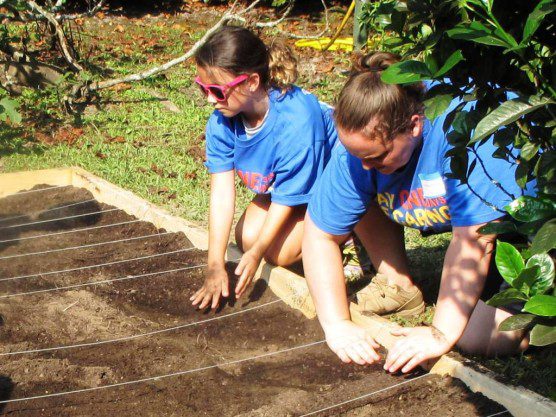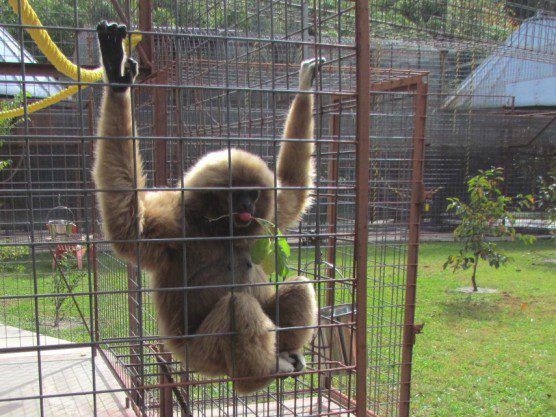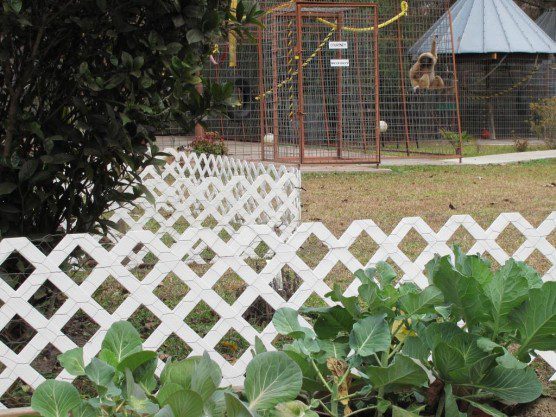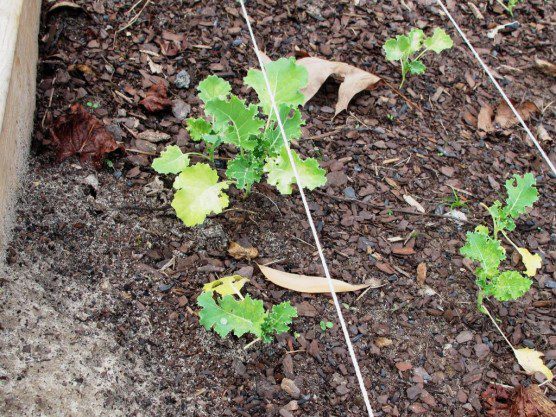A rabbit-proof fence for our gibbon garden

Back in September, a group of kids from the University School of the Lowcountry volunteered at IPPL’s sanctuary as part of the Trident United Way Day of Caring. Their main project was to plant some raised-beds with veggies for our gibbons.
We wanted to try out these pilot plots to see if we could feasibly grow some easy vegetables on our property to supplement those we buy for our gibbons’ daily meals. We already grow some grapes, figs, and blueberries, but because our soil is not the greatest, we hadn’t had much luck with veggies yet.

IPPL animal caregiver Samantha Martin (right) with one of the volunteers from the University School of the Lowcountry were at work on a gibbon veggie garden at IPPL this past September.
The verdict?
The collards (the only veggies we planted as starts; the rest were all planted as seeds) have been doing well; we’ve been feeding them to to the gibbons for months.

The collards, which we planted as starts, have done well; we’ve been harvesting them for months.
The radishes have flourished and have been quite a hit with the gibbons.

Samantha gives Courtney a radish–grown and harvested just a few feet away!

Courtney loves radishes!
The lettuce and beets never really made it. We got a few onion sprouts, but they didn’t thrive.
The micro-greens were off to a promising start, then vanished; they might have gotten eaten early on by garden patch raiders.
But the kale—was definitely chomped: by bunnies!
Our caregivers know that there are at least two rabbits that make their way through our main gibbon yard at dusk. One of the little guys seems to live under a large bush next to Maynard’s round enclosure, just a few hops away from our veggie beds.

Courtney, in the background, looks out over our gibbon veggie garden plots with their new rabbit-proof fences.
I’m sorry, but around here, gibbons trump bunnies! So Hardy Brown, one of our caregivers, made a fence to discourage them. It’s not a really high barrier, but it seems to be enough of a deterrent so that they scamper off in search of easier eats. In the last couple of weeks, since the fence was put in place, some of the not-entirely-eaten kale has actually been making a comeback.

The comeback kale! (Sorry, no bunny pics available at this time….)
We’ve learned a lot from these test plots. Next year we’d like to look into establishing a few more beds, growing more (well-protected) kale, and trying out some new lines of veggies—maybe broccoli as well as some cucumber and squash vines. We’d also like to start doing some serious composting.
Our animal care staff has really gotten bitten by the gardening bug. Says our senior animal caregiver Meg McCue-Jones, “We all like getting dirty and knowing exactly where our veggies are coming from!”

